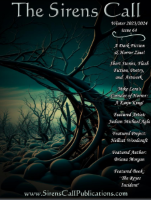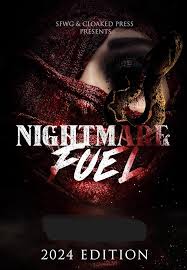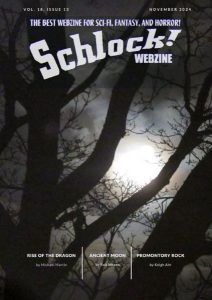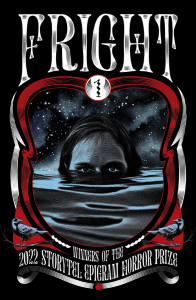
I’m pleased to say that at the end of last month – appropriately in time for Halloween – I had a new short story published in Issue 5 of Witch House Magazine. Witch House is devoted to “the pulp fiction tradition of a modern gothic literature called ‘cosmic horror.’ Writers in this tradition include (but are not limited to) the following: Edgar Allan Poe, M.R. James, Arthur Machen, H.P. Lovecraft, Clark Ashton Smith, Robert Bloch, August Derleth, Shirley Jackson, Stephen King, and many more. ‘Cosmic horror’ emphasizes helpless protagonists, unexplainable monstrous menaces, and fictional occult themes such as forbidden lore and evil conspiracy.” My story is entitled The Bustle in the Hedgerow and, because it’s macabre in tone, it’s attributed to Jim Mountfield, the penname I use for such fiction.
Yes, the title was inspired by a lyric (“If there’s a bustle in your hedgerow, don’t be alarmed now”) in Led Zeppelin’s Stairway to Heaven (1971), a song that a very long time ago I thought was great but now, having heard it a million times, I’m heartily sick of. Other songs that fall into this unfortunate category include the Beatles’ Hey Jude (1968), Derek and the Dominos’ Layla (1970) and the Eagles’ Hotel California (1977). But that’s the only Zeppelin-esque influence on the story. The Bustle in the Hedgerow owes its existence to three different ideas I had at three different times, which I duly recorded in my ideas notebook. All published writers and aspiring writers of an elderly disposition, like me, carry a notebook into which they scribble the ideas that occur to them. Though I suppose these days younger writers may record their ideas using a notes app on their smartphones.
The story’s main character was based on the historian, writer and poet Walter Elliot, who’s written extensively about the Scottish Borders, especially the lovely Ettrick and Yarrow part of it. My family own a small farm near the Borders town of Peebles. One day Walter showed up on our doorstep, asking if he could take a look around one of our fields in the cause of historical and archaeological research. My dad happily told him to go ahead and, as a thank you, Walter presented him with free copies of couple of his books. “A historian doing research in a remote farm field,” I thought. “That’d make a good premise for a story.” I wrote the idea down.
I should say that Walter Elliot is still on the go. His work was acknowledged and lauded in the Scottish Parliament in 2021. So please, don’t anyone tell him I’ve turned him into a character in a horror story.

The second idea came when my dad got a grant from the European Union – oh, how long ago that seems now – to improve the natural environment of the farm and planted half-a-mile of hedgerow along the side of its biggest field. One of the reasons why the hedge got approval was because it’d act as a ‘wildlife corridor’, allowing wild animals to move from habitat to habitat without having to cross roads or cultivated land. Because the hedge started at a site where the local burn widened into a pool, and it ended at a shelterbelt of trees adjacent to our farmstead, I had a typically horror-writer-ish thought: “Hey, if something nasty lived in that pool, it could now use the hedge, the wildlife corridor, as a way of getting access to our house!” And another idea was scribbled down.
Thirdly, I’d made notes about, and always wanted to write a story connected with, the Hexham Heads. These were two little stone heads, alleged by some to be Celtic in origin, discovered in the northeast English town of Hexham in 1971. They reputedly caused unwelcome and frightening paranormal activity in the homes of whoever had custody of them. Infamously, Nationwide (1969-83) – a normally easy-going, family-friendly TV current-affairs programme that the BBC aired every weekday evening around six o’clock – featured a report on the story in 1976. For some reason, the makers of the report saw fit to throw in images of severed human heads on tree-branches, screams and an unexpected jump-cut of Oliver Reed from 1961’s Curse of the Werewolf amid the creepy interviews, traumatising every young kid who happened to be watching. It certainly scared the shit out of me. (Long believed lost, footage of that legendary 1976 report has now been discovered and restored. See here and here.)

From wikipedia.org / © Archaeology Data Service / Dr Anne Ross
I don’t normally dispense advice to other writers. For me, personally, this has always felt a bit pompous. But based on my experiences here, I’d recommend them to (1) make notes of their ideas before they forget them, and (2) avoid regarding each idea as having a linear correlation with a story. Rather than thinking ‘one idea equals one story’, they should keep studying all their ideas, however random, and keep looking for ways that two, three or more ideas could be combined in a single work. This cross-fertilisation allowed me to come up with The Bustle in the Hedgerow.
Containing eleven pieces of fiction and five poems, Issue 5 of Witch House Magazine can be downloaded here.








